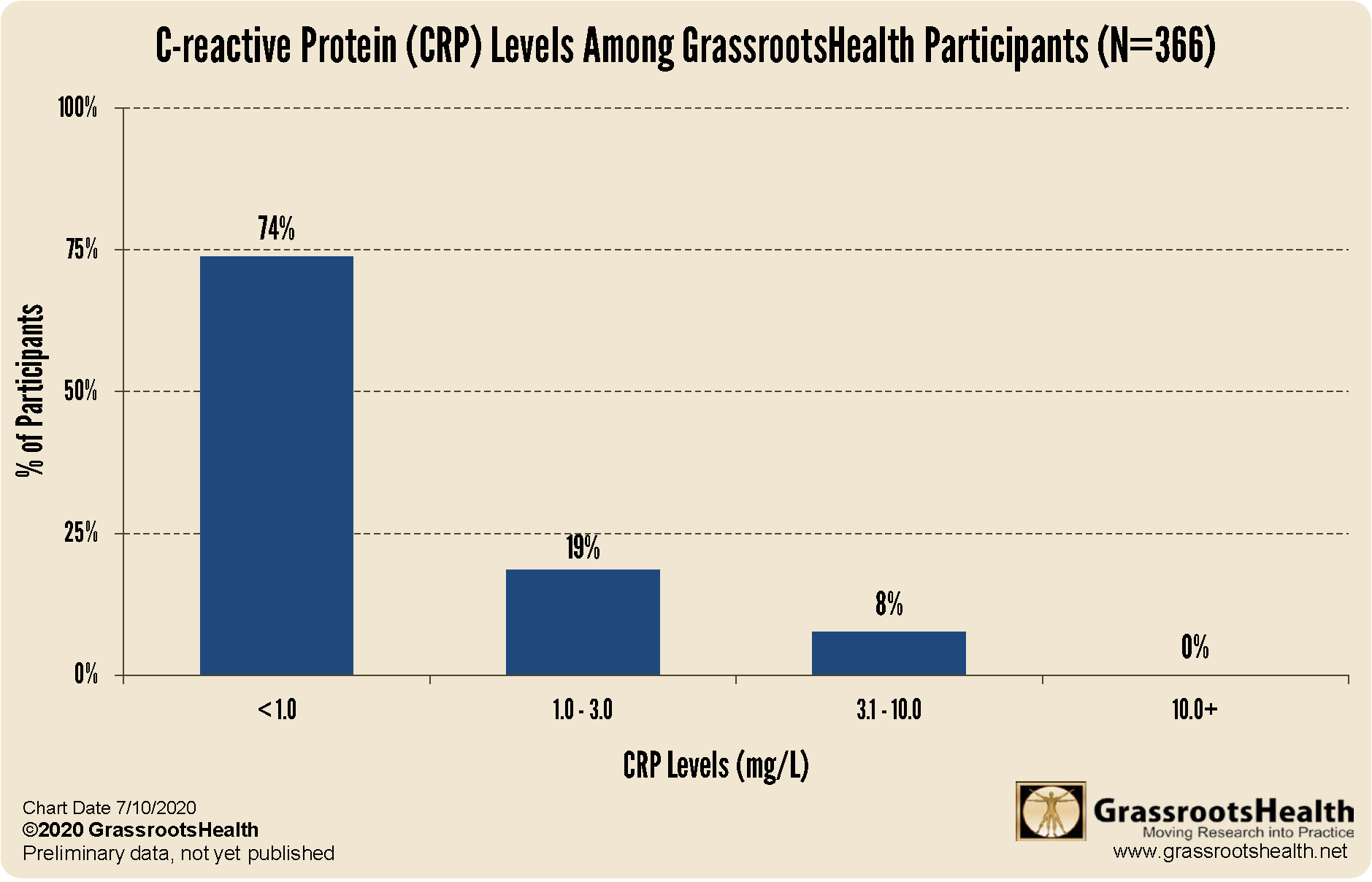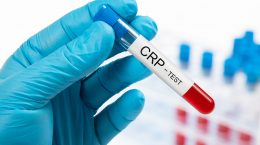Published on July 14, 2020
Chronic, low-level inflammation has been linked to a number of chronic diseases including cardiovascular disease and diabetes. The higher the inflammation levels, the higher the risk of developing chronic disease. Sometimes an individual will experience symptoms such as joint pain or fatigue, but often times there will be no symptoms until disease occurs. Therefore, the only way to know your inflammation level is to measure it.
What is C-reactive Protein?
 C-reactive protein (CRP) is a biomarker for inflammation. Elevated CRP levels have been linked to metabolic syndrome, future heart attacks, stoke, peripheral arterial disease, and the development of diabetes. Included in our Inflammation Panel, the CRP test uses a high sensitivity assay to detect small elevations in CRP (called hs-CRP where “hs” means high sensitivity). Current evidence suggests that levels below 1.0 mg/L indicate low risk of cardiovascular disease, levels between 1.0 and 3.0 mg/L indicate average risk, and levels between 3.1 and 10 mg/L indicate increased risk (levels above 10 mg/L most likely indicate an acute infection or injury). Lifestyle changes such as increasing exercise, losing weight, and quitting smoking can lower CRP levels.
C-reactive protein (CRP) is a biomarker for inflammation. Elevated CRP levels have been linked to metabolic syndrome, future heart attacks, stoke, peripheral arterial disease, and the development of diabetes. Included in our Inflammation Panel, the CRP test uses a high sensitivity assay to detect small elevations in CRP (called hs-CRP where “hs” means high sensitivity). Current evidence suggests that levels below 1.0 mg/L indicate low risk of cardiovascular disease, levels between 1.0 and 3.0 mg/L indicate average risk, and levels between 3.1 and 10 mg/L indicate increased risk (levels above 10 mg/L most likely indicate an acute infection or injury). Lifestyle changes such as increasing exercise, losing weight, and quitting smoking can lower CRP levels.
What are the CRP levels among GrassrootsHealth Participants?
Among the 366 participants who tested their CRP levels, the average level was 0.4 mg/L. Almost three fourths (74%) of participants have CRP levels <1.0 mg/L (low risk), 19% have levels between 1.0 and 3.0 mg/L (average risk), and 8% have levels between 3.1 and 10.0 mg/L (increased risk).
Additionally, among those who completed two or more tests, 40% of those with average risk (1.0 to 3.0 mg/L) and 86% of those with increased risk (3.1 to 10.0 mg/L) lowered their CRP levels after their first test.
Check on Your Inflammation Levels Today
Inflammation is a leading contributor to poor health and chronic disease. Testing your level of CRP can give you a better idea of how much inflammation you are currently living with, and give you an opportunity to take steps to decrease it. Test your level today with the Inflammation Panel!
Are You Getting Enough Vitamin D?
Do you know what your vitamin D level is? Be sure to test today to find out, and take steps to keep it within a target of 40-60 ng/ml or 100-150 nmol/L! Give your immune system the nutrients it needs to support a healthy you and protect yourself from unnecessary diseases.
Through GrassrootsHealth Nutrient Research Institute, you can also test your essential elements magnesium, copper, zinc and selenium, toxins such as lead, mercury and cadmium, as well as your omega-3 levels, inflammation levels and thyroid stimulating hormone (TSH) level. Find out your levels today! Log on to the test selection page (click the link below) to get your tests and see for yourself if your levels can be improved.
Make sure you track your results before and after, about every 6 months!
How can I track my nutrient intake and levels over time?
To help you track your supplement use and nutrient levels, GrassrootsHealth has created the Personal Health Nutrient Decision System called
For each specific supplement, you can track what days you take it, how much, and many other details. This will help you know your true supplemental intake and what patterns of use work for you to reach and maintain optimum nutrient levels. Check it out today!








